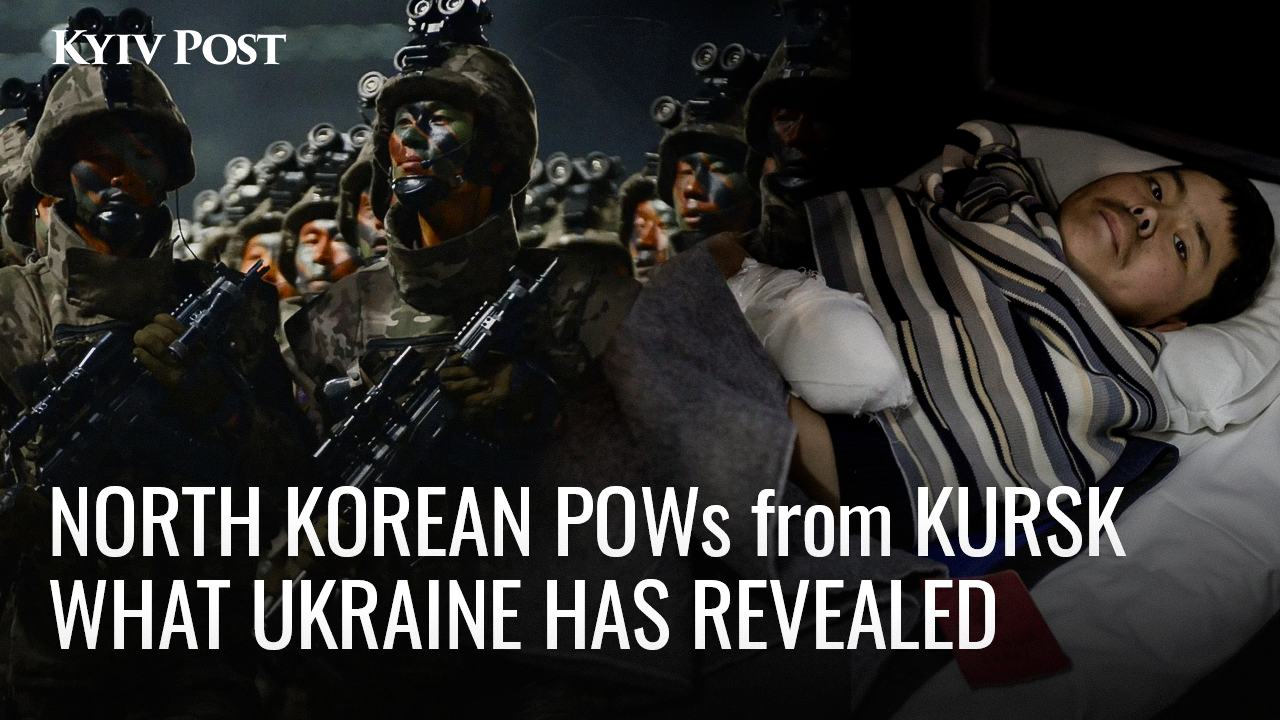Ukrainian and, increasingly, Russian milbloggers are posting videos depicting the appearance of unmanned ground vehicle (UGV) drones on the battlefield following on the success shown by Ukraine’s unmanned aerial vehicles (UAV) and unmanned surface vessels (USV).
The favorite subjects are so-called kamikaze versions delivering explosive charges onto a target – which means the video clip usually ends with an impressive explosion. Others carry weapons – grenade launchers, machine guns and cannon, shown firing bursts of tracer bullets at enemy positions. Other versions are intended for landmine clearance, as logistic vehicles to deliver supplies to troops in contact or even used for medevac.
JOIN US ON TELEGRAM
Follow our coverage of the war on the @Kyivpost_official.
In March, Brave1, Ukraine’s government-sponsored defense-technology research and development hub, said it had received applications to assess and evaluate almost 150 UGV. “Hundreds of them will be procured… to strengthen the Ukrainian army on the battlefield in a few months – UGVs will become the next game changer in this war, as drones already have,” the organization said on its social media channels.
The concept, like so many modern battlefield weapons, is not new. Soviet radio-controlled “teletanks” were used during the 1939 invasion of Finland and the German military (unsuccessfully) used the Goliath kamikaze ground drone controlled by wire.

Ukraine Strikes Russian Aircraft Factory, Oil Depot Hit Again, Says Kyiv
Modern materials, engineering innovations, and communication technology have given them a new lease of life that is only limited by the imagination and engineering skills of its designers.
Let’s look at some of those innovations in a little more detail.
UKRAINIAN UGV
Ratel S (Honey Badger)
The Ratel S is a first-person view (FPV), battery-powered four-wheel drive vehicle capable of carrying a 40-kilogram payload at a speed of 24 km/h to a range of up to five kilometers with a duration of up to two hours. It is remotely controlled by an operator and uses an aerial drone to monitor its progress and can be fitted with a signal repeater to increase the range of the drone.
Here is a 🇺🇦-made kamikaze robot that'll soon rock Russians. Ratel S carries anti-tank mines & combat module. So, the operator can blow up enemie‘s equipment from a safe location. Ratel S already passed field tests & put into mass production. One more tech supported by @BRAVE1ua. pic.twitter.com/dqtS1WVUjW
— Mykhailo Fedorov (@FedorovMykhailo) October 24, 2023
Roboneers Ironclad
The Ironclad multifunctional unmanned ground vehicle (MUGV) fitted with 12.7mm automatic cannon. Photo: Mykhailo Fedorov
Ironclad is a multifunctional unmanned ground vehicle (MUGV) capable of carrying out combat, logistics, medevac and other tasks in support of surveillance and attack operations or independently. It is FPV controlled from a deployable control room and uses an air or ground repeater-based communication networks to extend its range.
Milrem Robotics THeMIS UGV
14 of the Estonian manufactured UGVs were delivered to Ukrainian armed forces. Seven of the systems are used to carry cargo and for casualty evacuation (CASEVAC) and seven, have been equipped with payloads from the French CNIM Groupe, designed to support route clearance and demining operations.
“The UGVs delivered to Ukraine are being used to clear areas from anti-tank mines as well as unexploded ordnances (UXOs), transporting equipment to areas that are not accessible with conventional vehicles or where the risk of losing that equipment is high,” Jüri Pajuste, Milrem’s Ukrainian project manager said.

“Lyut” (Fury) robotic mini tank
Lyut is equipped with a PKT 7.62-millimeter machine gun intended to function as a mobile firing platform in support of combat operations or as a “surveillance by fire” system to identify enemy positions. It maximizes the use of off-the-shelf electronic and communication components to minimize costs.
This UGV has a direct line-of-sight communication range of up to 2 kilometers (1.2 miles) or 700 meters (2,296 feet) in locations with natural and man-made obstacles. Its weapon is equipped with targeting cameras and can hit enemies at 800 meters (2,624 feet).
RUSSIAN UGV
Uran-9 Unmanned Ground Combat Vehicle
More a remote-controlled tank, at over 5 meters long, than the smaller agile systems normally considered to be UGVs, the Uran-9 multipurpose unmanned ground combat vehicle was first revealed in September 2016. It works as part of a five vehicle “complex” consisting of four UGVs, a mobile command station, and a transportation tractor.
It is armed with four 9M120-1 Ataka anti-tank guided missile launchers, a stabilized 30mm automatic cannon and a PKT/PKTM 7.62mm coaxial machine gun.
“Lyagushka” (Frog) kamikaze UGV
The Lyagushka is designed as a “stealth” drone advertised by the Russian Defense Ministry as “a significant leap in unmanned warfare technology” – although it seems to be a standard example of the concept. It is said to be a silent running, battery powered platform able to carry a 30-kilogram payload at a maximum speed of 20 kph used to “infiltrate enemy lines undetected with stealth and precision.” It is FPV also controlled supported and adjusted by an unmanned aerial vehicle. The first reported operational deployment was during Russia’s offensive against Avdiivka.
🐸📹 First use of Lyagushka (lit. Frog) robot in combat conditions
— Rahini (@rahini1207) June 4, 2024
Russian troops used the robot to destroy a Ukrainian machine-gun crew near Avdeyevka.
SputnikInt pic.twitter.com/sNIi0pfQ45
“Depesha” and “Buggy” UGVs
These two kamikaze UGV share a common chassis and a common purpose. According to Russian commentators, they are designed to target personnel, military equipment, and, particularly, dragon’s teeth - concrete “pyramid” blocks used to impede tank advances and prevent infantry from gaining ground. The drones are FPV-controlled.
The Depesha is tracked capable of carrying a 150-kilogram payload and the Buggy is the wheeled variation with a carrying capacity of 250 kilograms. Rostec, the state-run defense giant, stated that the drones are currently undergoing “testing, including in Ukraine,” and could in the future assist in the delivery of provisions, ammunition, and fuel, as well as evacuating wounded soldiers.
Test version of the “Buggy” UGV. Photo Russian MoD
The work continues
According to the Army Recognition website as many as 30 different UGVs were undergoing testing many of which were displayed at a defense exhibition in April during which Russian Defense Minister Sergei Shoigu, before he was moved to pastures new,
ordered the immediate mass production of UGVs designed for medical evacuation saying, without irony, “The urgency for this vehicle is paramount. It should be dispatched to the unit within the next few days and commence operations. There is no greater priority than preserving human life.”
Other UGVs shown included the “Marker” kamikaze drone designed to target and neutralize armored vehicles, the “Sosna-N” anti-sniper system that supposedly can detect and disrupt sniper activities with “remarkable accuracy,” the “Cherepakha” wheeled cargo drone, automated demining and UXO clearance systems the “Stalker” and “Scorpion,” and the “Pitbull” and “Partisan” reconnaissance drones.
Examples of Russian UGVs on show at the April exhibition. Photo: Russian MoD
Having seen how Ukraine has successfully organized the development and deployment of UAVs, USVs and now UGVs it is not surprising that Russia’s armed forces are turning their attention to battlefield robots. Ukraine. However, they have a lot of catching up to do and it remains to be seen whether Russia will be able to produce such vehicles in a short enough timeframe to have an impact on the battlefield.
You can also highlight the text and press Ctrl + Enter
















